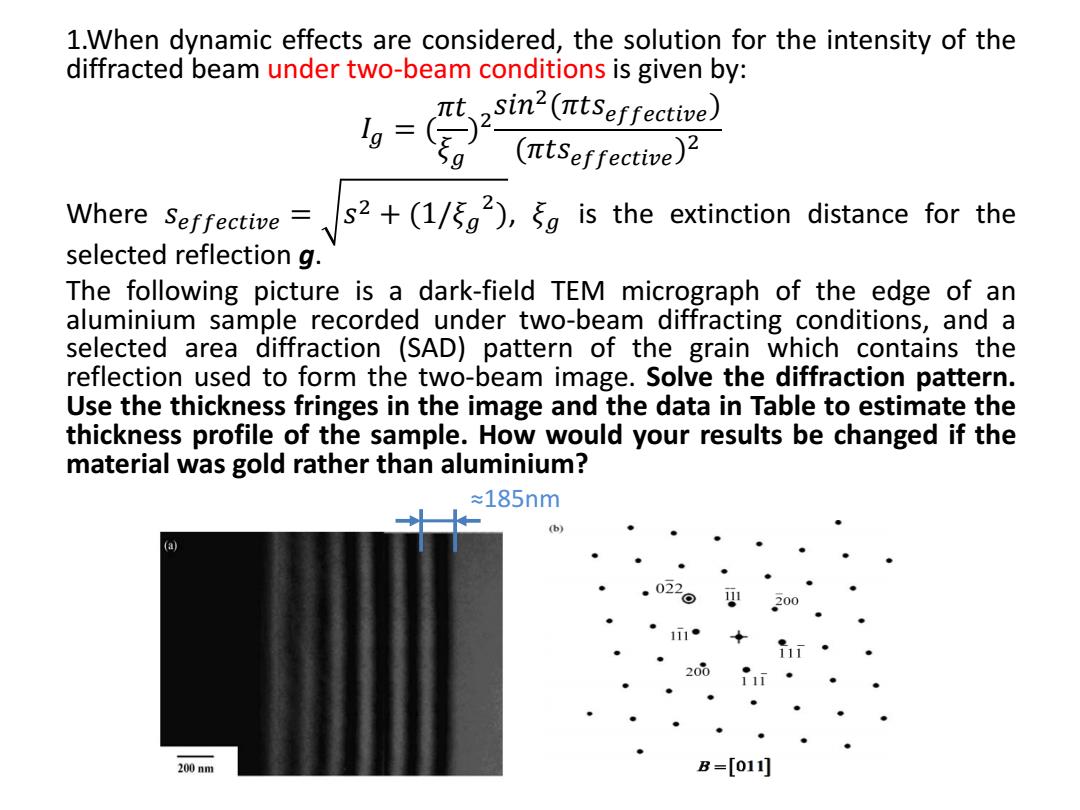正在加载图片...

1.When dynamic effects are considered,the solution for the intensity of the diffracted beam under two-beam conditions is given by: 1g= ((seei) (πtSeffective)Z Where Seffective=s2+(1/5g2),g is the extinction distance for the selected reflection g. The following picture is a dark-field TEM micrograph of the edge of an aluminium sample recorded under two-beam diffracting conditions,and a selected area diffraction (SAD)pattern of the grain which contains the reflection used to form the two-beam image.Solve the diffraction pattern. Use the thickness fringes in the image and the data in Table to estimate the thickness profile of the sample.How would your results be changed if the material was gold rather than aluminium? ≈185nm (b) (a) 02 200nm B=[011]1.When dynamic effects are considered, the solution for the intensity of the diffracted beam under two-beam conditions is given by: 𝐼𝑔 = ( 𝜋𝑡 𝜉𝑔 ) 2 𝑠𝑖𝑛2 (𝜋𝑡𝑠𝑒𝑓𝑓𝑒𝑐𝑡𝑖𝑣𝑒) (𝜋𝑡𝑠𝑒𝑓𝑓𝑒𝑐𝑡𝑖𝑣𝑒) 2 Where 𝑠𝑒𝑓𝑓𝑒𝑐𝑡𝑖𝑣𝑒 = 𝑠 2 + (1/𝜉𝑔 2 ), 𝜉𝑔 is the extinction distance for the selected reflection g. The following picture is a dark-field TEM micrograph of the edge of an aluminium sample recorded under two-beam diffracting conditions, and a selected area diffraction (SAD) pattern of the grain which contains the reflection used to form the two-beam image. Solve the diffraction pattern. Use the thickness fringes in the image and the data in Table to estimate the thickness profile of the sample. How would your results be changed if the material was gold rather than aluminium? ≈185nm